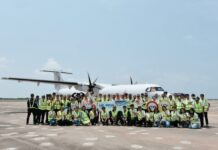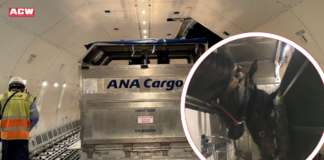Cathay Pacific Cargo Terminal (CPCT) has handled 1.5 million tonnes of cargo in its first full year of operation, with transshipments accounting for most of the volume.
In 2014, 54 per cent of cargo tonnage at CPCT came from transshipments, with 31 per cent from exports and the remaining 15 per cent from imports. The terminal is operated by Cathay Pacific Service (CPSL), a subsidiary of Cathay Pacific. It started operating on 21 February 2013, handling freight from Cathay Pacific flight CX138 from Sydney (Australia). Full operations commenced on 15 October 2013 before being officially opened on 17 February 2014.
CSPL chief executive offer, Kelvin Ko, says: “2014 was Cathay Pacific Cargo Terminal’s first full-year of operations. With concerted efforts by our dedicated team, we are able to achieve the highest level of service performance that we have promised our customers from the beginning.”
CSPL serves the airlines, AirAsia, Air Hong Kong, Cathay Pacific, Dragonair, EVA Airways, Royal Brunei Airlines and Thai AirAsia. CPCT, which cost 5.9 billion Hong Kong dollars ($761 million) to build, can handle 2.6 million tonnes a year, increasing Hong Kong International Airport’s annual capacity to 7.4 million tonnes. When it opened in October 2013, it served Cathay Pacific, Dragonair and Air Hong Kong. In June 2014, it started cargo services for AirAsia, and for Royal Brunei Airlines in August 2014. On 5 January 2015, CPSL started services for EVA Air.
In August 2014, CPSL obtained the International Air Transport Association Safety Audit for Ground Operations Registration. At the time Ko said: “We strive to provide our customers with worry-free cargo handling services at our Terminal and to support their business growth.”
In January 2015, it also achieved certification of ISO 28000 for security management. In January, Ko said: “Customers paying premiums for airfreight expect their goods to arrive at the destination on time and in excellent condition. Maintaining the integrity of the supply chain … is perhaps one of the biggest challenges for the industry today.”











